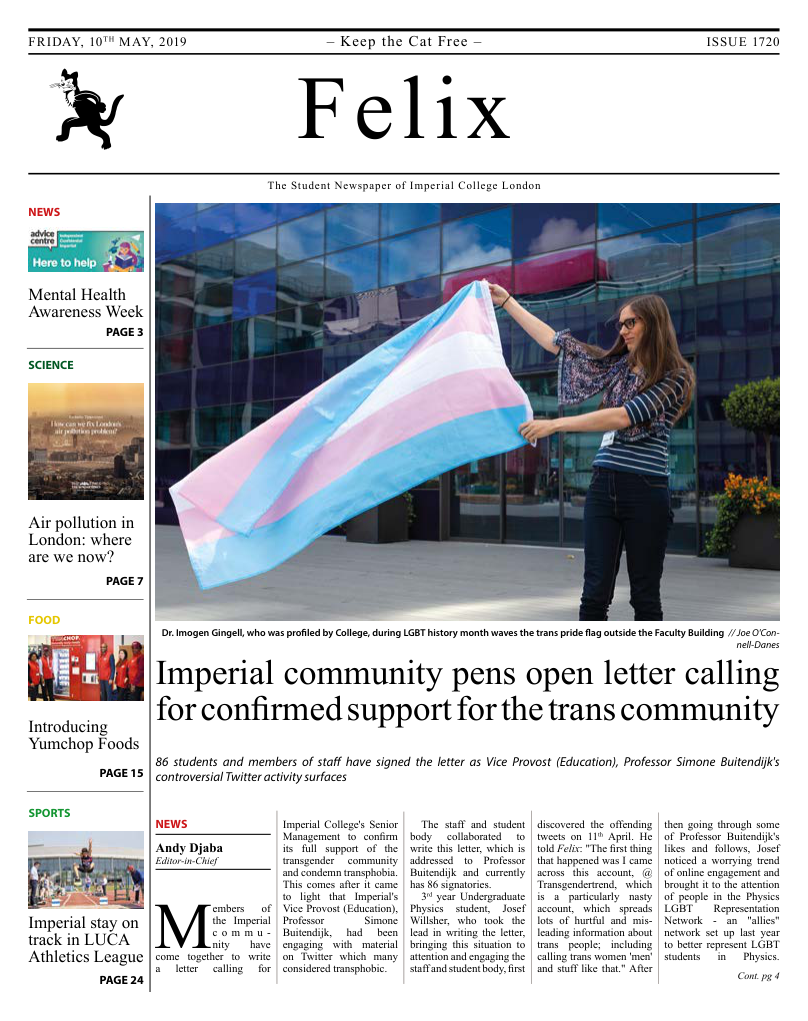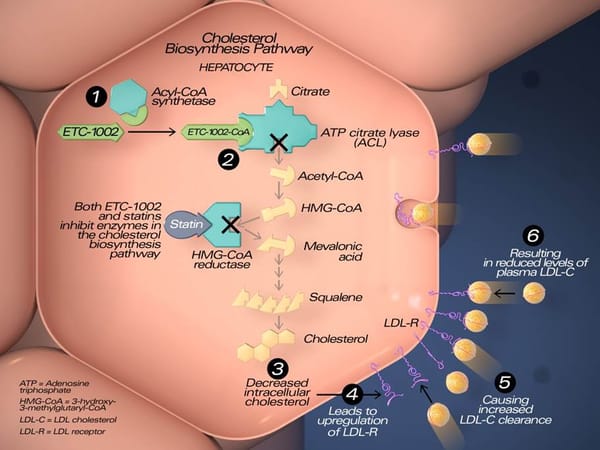Air pollution in London: where are we now?

It is not an exaggeration to say that pollution is one of London’s biggest challenges for the foreseeable future. While it is true that the situation is not as concerning as 70 years ago, when the pea soup-like Great Smog killed 4000 people in less than a week, the current pollution cloud that floats over the capital is still a major health hazard for all Londoners, especially the youngest and oldest citizens. In anticipation of the 20th May speaking event on the matter, organised by the Times and Imperial College London, I will present to the Felix readers an objective account of the present state of the problem.
When the media talks about air pollution, a majority of us imagine a bleak landscape of black fumes coming from a multitude of factories. Indeed, pollution is caused by the emission of toxic substances resulting from human activity. But what are those substances exactly, and why are they harmful for us and the environment?

The causes of the problem
The three big bad boys most responsible for the current sad state of the air quality in our city are nitrogen dioxide (NO2), sulphur dioxide (SO2) and carbon monoxide (CO). NO2 comes from the combination of the nitric oxide (NO) emitted by heating and engines in vehicles with the oxygen present in the air; SO2 is a by-product of the combustion of coal, oil and gas, which contain small amounts of sulphur, and CO is the main product of said combustion when it is done under conditions where the concentration of oxygen is low. The health effects resulting from prolonged exposition to them include higher chances of developing chronic respiratory diseases, several types of cancer and overall reduced life expectancy. It is estimated that 4000 Londoners had to be hospitalised due to the ill effects of pollution on their health between the years 2014 and 2016, a quarter of them being children under the age of 14. 600,000 Londoners suffer from asthma, a condition that is worsened by high levels of air pollution.
In 2016, the annual mean levels of NO2 concentrations in 59 of 97 air monitoring sites in London were over the UK legal limit, with Brixton Road, Oxford Street and Strand recording the highest amounts. In 2013, it was estimated that vehicle engines were responsible for half of all emissions of NO2 into London, much more than aviation and industry, which accounted for 7% each. Thus, it is imperative to tackle the problem of vehicle emissions in order to solve this public health crisis. This is the point where we meet a term that has become quite familiar in the last month: ULEZ.
The measures taken to tackle it
While several initiatives have been implemented for the last couple of decades by both the Mayor and the London boroughs in the hopes of improving the air quality of the city (e.g. promotion of the bike as a mean of transportation, Congestion Charge for vehicles in Central London between 7am and 6pm on weekdays), the recently implemented Ultra Low Emission Zone (ULEZ) is by far the most ambitious policy adopted by the local administration to date. Currently covering the West End, Bankside, the City and parts of the East End, the ULEZ will be extended to the North and South Circular Roads in 2023, thus including more than 3.8 million people under its reach.
The scheme is very similar to the Central London Congestion Charge started in 2003, but it now operates 24 hours a day, seven days a week. Drivers of polluting vehicles (i.e. those that do not comply with the European emission standards in their respective categories) need to pay £12.50 per day for driving within the zone, or £100 if they are driving heavier vehicles like lorries or coaches. The Central London Congestion Charge of £11.50 is applied on top of that. While it may sound harsh, and indeed there has been some protesting over the matter, 70% of Londoners approve the current measures, and a similar amount would like further restrictions.
A glimpse of hope
It is extremely early to evaluate the effect that the ULEZ has had on the overall pollution levels of London, but there is encouraging research that shows the less extensive regulations implemented since 2010 have been somewhat successful in improving the quality of air. Total NO2 emissions have fallen by 9% since 2013 and no breaches of the annual pollution levels allowed by European directives have occurred in 2019 so far.
If you want to learn more about the problem, attend the seminar hosted at Imperial on 20th May, where you will be able to ask questions to some of the biggest experts in the area.
Forget Brexit: What is being ignored?
At the next event, The Times will launch a competition to give one Imperial student the chance to write for Red Box, The Times’ award-winning political newsletter, once a month for a three month period. The winner will also meet Matt Chorley, the editor of Red Box, to find out what it’s like working in Westminster.
Full details of how to enter will be announced May 20th but, if you’re interested, start thinking about what are the issues which are important to you that are being overlooked while politicians are distracted by Brexit? What is the one law you would pass if you were prime minister for the day? What is happening in health, education, housing, employment, welfare, the environment, transport, the arts, sport and family life? And what will be the long-term impact on Britain if the problems are not tackled soon?









